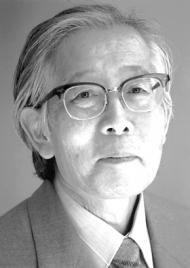Sports Illustrated is an American sports media franchise owned by media conglomerate Time Warner. Its self titled magazine has over 3.5 million subscribers and is read by 23 million adults each week, including over 18 million men. It was the first magazine with circulation over one million to win the National Magazine Award for General Excellence twice. Its swimsuit issue, which has been published since 1964, is now an annual publishing event that generates its own television shows, videos and calendars.
HistoryThere were two magazines named
Sports Illustrated before the current magazine began in
1954. In 1936, Stuart Scheftel created Sports Illustrated with a target market for the sportsman. He published the magazine from 1936-1938 on a monthly basis. The magazine was a life magazine size and focused on golf, tennis, and skiing with articles on the major sports. He then sold the name to Dell Publications, which released Sports Illustrated in 1949 and this version lasted 6 issues before closing. Dell's version focused on major sports (Baseball, Basketball, Boxing) and competed on magazine racks against
Sport and other monthly sports magazines. During the 1940s these magazines were monthly and they did not cover the current events because of the production schedules. There was no large-base general weekly sports magazine with a national following on actual active events. It was then that
Time patriarch Henry Luce began considering whether his company should attempt to fill that gap. At the time, many believed sports was beneath the attention of serious journalism and did not think sports news could fill a weekly magazine, especially during the winter. A number of advisers to Luce, including
Life magazine's Ernest Havemann, tried to kill the idea, but Luce, who was not a sports fan, decided the time was right.
The goal of the new magazine was to be "not a sports magazine, but the sports magazine". Many at Time-Life scoffed at Luce's idea; in his Pulitzer Prize–winning biography, Luce and His Empire, W. A. Swanberg wrote that the company's intellectuals dubbed the proposed magazine "Muscle", "Jockstrap", and "Sweat Socks". Launched on August 19, 1951, it was not profitable (and would not be so for 12 years) and not particularly well run at first, but Luce's timing was good. The popularity of spectator sports in the United States was about to explode, and that popularity came to be driven largely by three things: Economic prosperity, television, and Sports Illustrated.
The early issues of the magazine seemed caught between two opposing views of its audience. Much of the subject matter was directed at upper class activities such as yachting, polo and safaris, but upscale would-be advertisers were unconvinced that sports fans were a significant part of their market.
After more than a decade of steady losses, the magazine's fortunes finally turned around in the 1960s when Andre Laguerre became its managing editor. A European correspondent for Time, Inc., who later became chief of the Time-Life news bureaus in Paris and London (for a time he ran both simultaneously), Laguerre attracted Henry Luce's attention in 1956 with his singular coverage of the Winter Olympic Games in Cortina d'Ampezzo, Italy, which became the core of SI's coverage of those games. In May 1956, Luce brought Laguerre to New York to become assistant managing editor of the magazine. He was named managing editor in 1960, and he more than doubled the circulation by instituting a system of departmental editors, redesigning the internal format, and inaugurating the unprecedented use in a news magazine of full-color photographic coverage of the week's sports events. He was also one of the first to sense the rise of national interest in professional football.
Laguerre also instituted the innovative concept of one long story at the end of every issue, which he called the "bonus piece". These well-written, in-depth articles helped to distinguish Sports Illustrated from other sports publications, and helped launch the careers of such legendary writers as Frank Deford, who in March 2010 wrote of Laguerre, "He smoked cigars and drank Scotch and made the sun move across the heavens ... His genius as an editor was that he made you want to please him, but he wanted you to do that by writing in your own distinct way."
Laguerre is also credited with the conception and creation of the annual Swimsuit Issue, which quickly became, and remains, the most popular issue each year.

